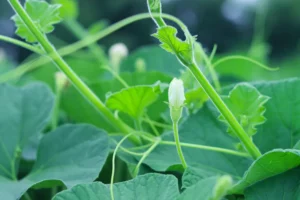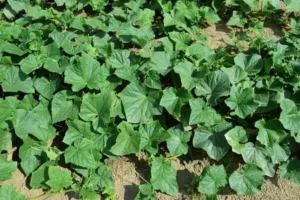When it comes to growing cucumbers, proper care and maintenance are essential to ensure a bountiful harvest. Pruning, a gardening practice that involves the selective removal of certain plant parts, plays a crucial role in the overall health and productivity of cucumber plants. In this article, we will delve into the art of pruning cucumber plants, exploring the reasons behind it and the step-by-step process to achieve successful results.
Why Prune Cucumber Plants?
Enhanced Air Circulation and Sunlight Exposure
Pruning cucumber plants promotes better air circulation and increased sunlight exposure. By removing excess foliage, you allow the remaining leaves to receive ample sunlight and airflow. This prevents the development of humid and shaded environments where diseases can thrive.

Disease Prevention
Diseases such as powdery mildew and bacterial wilt can easily spread in a dense and crowded cucumber plant. Pruning helps to create space between the leaves, reducing humidity and the likelihood of disease transmission.
Improved Fruit Quality
When cucumber plants are left unpruned, they may produce an excessive number of fruits. This can lead to smaller, misshapen, and lower-quality cucumbers. Pruning redirects the plant’s energy towards fewer fruits, resulting in larger, juicier, and more flavorful cucumbers.
When to Start Pruning
Identifying the Right Time
The timing of pruning largely depends on the type of cucumber plants you have. Bush cucumbers may require less pruning, while vine cucumbers benefit from more intensive pruning. As a general rule, start pruning once the plant has established a few sets of true leaves.
Early Growth Phase
During the early growth phase, focus on removing any lateral shoots that emerge in the leaf axils. These shoots divert energy away from the main stem and can lead to a tangled mess of foliage later on.
Tools Required for Pruning
Pruning Shears
Invest in a pair of sharp pruning shears. Clean and sharp cuts promote faster healing and reduce the risk of damaging the plant.
Gloves
Wear gardening gloves to protect your hands from potential scratches and irritations, especially when dealing with prickly cucumber vines.
Disinfectant
Before and after pruning, disinfect your tools to prevent the spread of diseases between plants.
Types of Cucumber Vines
Bush Cucumbers
Bush cucumber plants naturally have a more compact growth habit and require minimal pruning. Focus on removing dead or diseased leaves to maintain plant health.

Vine Cucumbers
Vine cucumber plants are more vigorous and benefit from extensive pruning. By selectively removing lateral shoots and excess foliage, you encourage the plant’s energy to be directed towards fruit development.
Pruning Techniques
Removing Side Shoots
Check the leaf axils for the emergence of side shoots, also known as suckers. Gently pinch or snip these shoots off to prevent them from competing with the main stem.
Managing Overcrowding
If your cucumber plant is becoming crowded, thin out the foliage by removing some of the older, less productive leaves. This creates more room, which improves airflow.
Addressing Diseased Leaves
If you spot any signs of disease on the leaves, promptly remove and dispose of them to prevent the spread of infections.
Step-by-Step Pruning Process
Inspect the Plant
Carefully examine your cucumber plant to identify areas that need pruning. Look for signs of disease, dead or damaged leaves, and excessive foliage.
Identify Unwanted Growth
Pinpoint the side shoots, crowded leaves, and any parts of the plant that are inhibiting air circulation and sunlight penetration.
Make Clean Cuts
Use sharp pruning shears to make clean cuts. Trim leaves and shoots close to the main stem without causing damage.
Training Cucumber Vines
Vertical Trellising
Consider training your cucumber vines vertically along a trellis. This not only saves space but also facilitates easier pruning and harvesting.
Horizontal Support
For bush cucumbers, providing horizontal support can help distribute the weight of the fruits and prevent them from touching the ground.
Common Mistakes to Avoid
Excessive Pruning
While pruning is beneficial, going overboard can stress the plant and reduce overall productivity. Maintain a balance between foliage removal and plant health.
Pruning Late in the Season
Avoid heavy pruning as the growing season comes to an end. The plant needs its leaves for energy production and ripening of remaining fruits.
How and when to prune cucumbers?
Cucumber pruning an help strengthen the health of the plant, boost yields, and facilitate harvesting. Here’s a guide to cucumber pruning, including when to do it:
Timing
After growing to a height of 12 to 18 inches (30 to 45 cm) and producing several lateral branches, cucumbers are usually clipped. Usually, this happens three or four weeks after planting.
Tools
To do pruning, you’ll need a pair of tidy, sharp gardening shears or scissors.
Locating the main stem
The primary, vertical stem that sustains the growth of the cucumber plant is known as the main stem.
Removing lateral branches
At leaf nodes, look for side shoots or lateral branches that sprout from the main stem. Rather than growing vertically, these branches typically develop horizontally. To prevent harming the plant, carefully trim these lateral branches close to the main stem, making clean cuts.

Removing extra foliage
To enhance air circulation and sunlight penetration, you can remove some leaves from the cucumber plant if it has an abundance of them. But take care not to remove too many leaves—they are essential to photosynthesis.
Training the plant
You can educate the main stem of a cucumber plant to climb a trellis or other support structure as it gets larger. This promotes vertical development, conserves space, and improves air circulation, all of which lower the risk of illness.
Routine upkeep
Pruning is a continuous procedure. To maintain a well-managed plant structure as the cucumber plant grows, frequently check for new lateral branches and remove them.
How can the yield of a cucumber be increased?
You can use the following advice to grow more cucumbers:
The right place to plant should have full sun exposure—at least 6 to 8 hours of direct sunshine per day—as well as sufficient air circulation.
Preparing the soil
Make sure it is rich in organic matter, fertile, and well-drained. Add well-rotted manure or compost to enhance soil fertility.
Planting spacing
To ensure healthy growth and airflow, leave enough space between cucumber plants. This lowers the chance of illness and helps avoid overpopulation.
Watering
Especially in the flowering and fruiting seasons, cucumbers need regular watering. Water the soil frequently and deeply to keep it equally moist but not soggy.
Mulching
Surround the cucumber plants with a layer of organic mulch, like wood chips or straw. Mulching keeps the fruits clean, inhibits the growth of weeds, and helps the soil stay wet.
Fertilization
Apply compost or a balanced fertilizer at the prescribed rates prior to planting. During the growing season, you can also apply a side-dressing of a fertilizer that is high in nitrogen to the plants.
Pollination
Pollination is necessary for the fruit set of cucumbers. Use pollinator-friendly techniques or plant flowers close by to attract pollinators, like bees, to your yard.
Pruning and training
These methods are beneficial for some types of cucumbers. To increase ventilation and lower the danger of disease, remove any overgrowth of greenery. Keep the plants upright using trellises or other supports to conserve space.
Pest and disease control
Keep an eye out for symptoms of pests and diseases on your plants on a frequent basis. Take the necessary actions, such as hand-picking pests, employing organic pest control techniques, or using the proper fungicides when needed.
Harvesting
To promote more fruit production, harvest cucumbers at the appropriate time. When they are firm, dark green, and the right size, pick them. Additionally, regular harvesting keeps fruits from getting stunted or overripe.
Should I remove cucumber flowers?
In most cases, it is advised to remove cucumber flowers under specific circumstances. The act of “pinching off” or “de-blossoming,” which involves removing the blooms, can assist the plant in focusing its energy on producing more fruit. Here are some ideas to consider:
Early Growth Stage
It may be helpful to pluck the first few blossoms when your cucumber plant is still young and developing its root system. This enables the plant to concentrate on building a solid base before bearing fruit.
Overcrowding
Having an excessive number of blossoms and budding fruits on your plant can result in smaller, inferior cucumbers. Removing some of the blooms enables the plant to concentrate more nutrients into a smaller number of fruits, which makes the cucumbers taste better and grow larger.

Problems with Pollination
It takes appropriate pollination for cucumbers to produce fruit. You can remove some male flowers (those without a tiny cucumber at their base) and use a small brush to manually transfer pollen to the female flowers if you discover that your cucumber blooms aren’t being fully pollinated (you might observe undeveloped or malformed fruit).
Trimming for Productivity
To boost cucumber productivity, some gardeners engage in judicious trimming. Removing extra leaves and blossoms will enhance light penetration and air circulation, which can benefit plants and increase fruit growth.
On the other hand, in the following circumstances, you might choose to leave the blossoms on the plant:
Desired Seed Production
You must allow the blossoms to turn into fruits if you wish to save cucumber seeds for a later planting. It is still possible to thin the fruit to guarantee higher-quality seeds.
Variety Is Important
Certain cucumber kinds bear fruit more consistently, even when the blooms aren’t pinched off. To find the optimal strategy, it’s a good idea to do some study on the particular variety you’re cultivating.
Cucumber Types
Recommendations for flower removal may vary depending on the type of cucumber (pickling, slicing, etc.). For example, pickling cucumbers are frequently left to yield extra cucumbers for harvesting.
FAQs:
What is the best time of day to prune cucumber plants?
Prune in the morning when the plants are well-hydrated and the sun is not yet too intense. This reduces stress on the plant.
Can I use regular scissors for pruning?
It’s recommended to use sharp pruning shears to make clean cuts without damaging the plant.
Will pruning help in increasing the yield of cucumbers?
Yes, pruning directs the plant’s energy towards fewer fruits, resulting in larger and higher-quality cucumbers.
Should I remove all the flowers during pruning?
No, it
Finally Some Quote:
Pruning cucumber plants is a skillful practice that can significantly enhance the health and productivity of your garden. By carefully removing excess growth, you create an environment that is conducive to disease prevention, improved fruit quality, and efficient energy utilization. Whether you’re dealing with bush or vine cucumbers, proper pruning techniques can lead to a satisfying and abundant harvest.